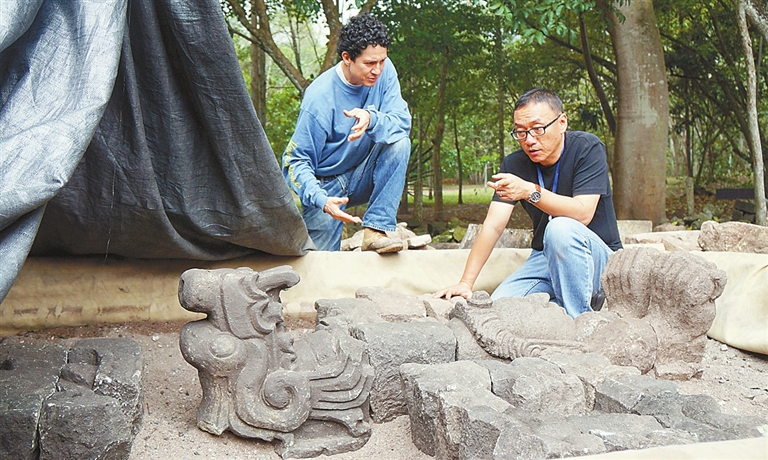
A JOINT archaeological project between China and Honduras is set for 2024 following the establishment of diplomatic relations between the two countries March 26, according to the Institute of Archaeology under the Chinese Academy of Social Sciences. The Central American country is well known for being one of the centers of the Mayan civilization. Wang Wei, president of the Chinese Society of Archaeology and the chief expert for a national project to trace the origins of Chinese civilization, said the export of China’s archaeology and cultural heritage protection experience showcases the country’s respect and appreciation of other civilizations. The magnificent pyramids, exquisite murals, unique hieroglyphs, astronomical calendars and mathematical systems of the ancient Mayan civilization are brilliant gems in human history. However, during the civilization’s peak period, the Mayans suddenly abandoned their homeland and migrated en masse, disappearing without a trace. The sudden decline of the civilization has long been a mystery, with theories ranging from natural disasters to invasions by foreign tribes. In July 2015, a team of Chinese archaeologists went to the once most prosperous city-state of the Mayan civilization, the Copan site, to decipher the mysteries of the Mayan civilization with modern archaeological techniques and promote cultural exchanges and mutual learning. Li Xinwei, a research fellow with the Institute of Archaeology, said that they excavated the residence of a noble at Copan’s Site 8N-11. The Chinese archaeological team’s exploration of the residence revealed significant findings, including elaborate carvings depicting worship of a maize god and ancestral reverence. These discoveries have provided new insights into the decline of the Mayan civilization. Copan is often seen as the Athens of the Mayan world. It controlled an area that extended from the Copan River basin in Honduras to the Motagua River basin in central Guatemala. Covering an area of about 2 square kilometers, the site includes two main sections, a core temple palace and the noble residence, that boast important relics such as tall pyramid temples, tombs, royal palaces and noble residences that represent the highest level of the Mayan civilization’s sculpture, art and writing. The Chinese team made significant progress excavating the courtyard of a noble. The meticulous tunnel excavation revealed the development and decline of the building and the ups and downs of the aristocratic family that lived in that era. A large number of exquisite carvings depicted worship of the God of Corn Yum Kaax and ancestor worship. They also discovered for the first time a large-scale carving of the rebirth of Yum Kaax from the belly of a dragon-headed bird. The dragon head of the bird is quite similar to that of Chinese dragon. The jade jewelry in the noble’s tomb was particularly splendid and included a statue depicting King Uaxaclajuun Ub’aah K’awiil, the 13th ruler of the Copan Dynasty. According to Li, the dragon head carving was likely part of a large pattern that was inlaid in the wall and that its shape reminded him of Chinese dragon. He pointed out that Mayan and Chinese civilizations could have inherited the same shamanic religious beliefs that originated during the late Paleolithic age. The Chinese archaeologists said that exploring the similarities and differences between different civilizations is crucial for bettering the understanding of the unique characteristics and development paths of each culture. The research also suggests that Chinese and Mesoamerican civilizations share common cultural genes. How a group of people with common cultural genes can explore different development paths on two isolated continents and create similar yet brilliant civilizations is a very fascinating research topic, according to Li. Noting that the five-year collaboration brought new knowledge and insight into both cultures, Li said that the data collected has now entered a new stage of compilation and they expect that a relevant report will be released in the next two years. In 2024, China will send three archaeologists to Honduras to start the next round of archaeological work. They will conduct archaeological excavations and restore cultural relics at a new noble compound. (Global Times) | 
